Juries
The residency-artist is always selected by an interdisciplinary jury. Jurors coming from the arts evaluate the submissions in an artistic way of thinking, representatives of the Ars Electronica Futurelab judge the submitted ideas in thinking on the possibilities of technical realization and beside that members of the scientific partners are assessing the projects on what is possible within the scientific work carried out at the different scientific facilities.
JURY 2/2020
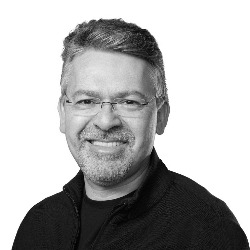 John Giannandrea is Apple’s senior vice president of Machine Learning and AI Strategy, reporting to CEO Tim Cook. John joined Apple in 2018 and oversees the strategy for artificial intelligence and machine learning across the company and development of Core ML and Siri technologies. Prior to Apple, John spent eight years at Google where he led the Machine Intelligence, Research and Search teams. Before this he co-founded two technology companies, Tellme Networks and Metaweb Technologies. Earlier in his career John was a senior engineer at General Magic. John graduated from the University of Strathclyde in Glasgow, Scotland where he earned a Bachelor of Science with Honors in Computer Science, and was awarded a Doctorate Honoris Causa. John is on the board of trustees at the SETI Institute and Castilleja School.
John Giannandrea is Apple’s senior vice president of Machine Learning and AI Strategy, reporting to CEO Tim Cook. John joined Apple in 2018 and oversees the strategy for artificial intelligence and machine learning across the company and development of Core ML and Siri technologies. Prior to Apple, John spent eight years at Google where he led the Machine Intelligence, Research and Search teams. Before this he co-founded two technology companies, Tellme Networks and Metaweb Technologies. Earlier in his career John was a senior engineer at General Magic. John graduated from the University of Strathclyde in Glasgow, Scotland where he earned a Bachelor of Science with Honors in Computer Science, and was awarded a Doctorate Honoris Causa. John is on the board of trustees at the SETI Institute and Castilleja School.  Martin Honzik (AT) is an artist and director of Ars Electronica’s Festival, Prix and Exhibitions divisions. He studied visual experimental design at Linz Art University (graduated in 2001) and completed the master’s program in culture & media management at the University of Linz and ICCM Salzburg (graduated in 2003). Besides being independent Artist in several art projects, he joined the staff of the Ars Electronica Future Lab, where, until 2005, his responsibilities included exhibition design, art in architecture, interface design, event design and project management. Since 2006, Martin Honzik has been director of the Ars Electronica Festival and the Prix Ars Electronica and in charge of the exhibitions in the Ars Electronica Center as well as Ars Electronica’s international exhibition projects.
Martin Honzik (AT) is an artist and director of Ars Electronica’s Festival, Prix and Exhibitions divisions. He studied visual experimental design at Linz Art University (graduated in 2001) and completed the master’s program in culture & media management at the University of Linz and ICCM Salzburg (graduated in 2003). Besides being independent Artist in several art projects, he joined the staff of the Ars Electronica Future Lab, where, until 2005, his responsibilities included exhibition design, art in architecture, interface design, event design and project management. Since 2006, Martin Honzik has been director of the Ars Electronica Festival and the Prix Ars Electronica and in charge of the exhibitions in the Ars Electronica Center as well as Ars Electronica’s international exhibition projects. Horst Hörtner (AT) is a media artist and researcher. He is an expert in the design of human-computer interaction and holds several patents in this field. Hörtner was a founding member of the Ars Electronica Futurelab in 1996 and since then he has been the director of this atelier/laboratory. He started work in the field of media art in the 1980s and co-founded the media-art group x-space’ in Graz, Austria, in 1990. Horst Hörtner works at the nexus of art and science and gives lectures and talks at numerous international conferences and universities.
Horst Hörtner (AT) is a media artist and researcher. He is an expert in the design of human-computer interaction and holds several patents in this field. Hörtner was a founding member of the Ars Electronica Futurelab in 1996 and since then he has been the director of this atelier/laboratory. He started work in the field of media art in the 1980s and co-founded the media-art group x-space’ in Graz, Austria, in 1990. Horst Hörtner works at the nexus of art and science and gives lectures and talks at numerous international conferences and universities.JURY 1/2020
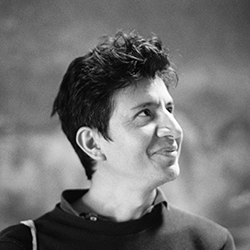 Oscar Santillà¡n (EC/NL) is an artist and cybernetician living in The Netherlands and Ecuador. His early career was deeply shaped by working within collective environments, and he continues to collaborate with scientists and other curious minds. He holds an MFA in Sculpture from Virginia Commonwealth University and has been artist-in-residence at Skowhegan (US), Jan van Eyck (NL) Ratti Foundation (IT), Delfina Foundation (UK), and Leiden Astronomical Observatory (NL). His work has been exhibited in the Yokohama Triennial 2020, Japan; MUAC Museum, Mexico; IMMA – Irish Museum of Modern Art, Ireland; Witte de With Center for Contemporary Art, Netherlands; NRW Forum Dusseldorf, Germany; FRAC ile-de-france, France; among others. He is one of the igniters setting órbitat—a platform for the encounter of art, science, and technology in Latin America— in motion.
Oscar Santillà¡n (EC/NL) is an artist and cybernetician living in The Netherlands and Ecuador. His early career was deeply shaped by working within collective environments, and he continues to collaborate with scientists and other curious minds. He holds an MFA in Sculpture from Virginia Commonwealth University and has been artist-in-residence at Skowhegan (US), Jan van Eyck (NL) Ratti Foundation (IT), Delfina Foundation (UK), and Leiden Astronomical Observatory (NL). His work has been exhibited in the Yokohama Triennial 2020, Japan; MUAC Museum, Mexico; IMMA – Irish Museum of Modern Art, Ireland; Witte de With Center for Contemporary Art, Netherlands; NRW Forum Dusseldorf, Germany; FRAC ile-de-france, France; among others. He is one of the igniters setting órbitat—a platform for the encounter of art, science, and technology in Latin America— in motion.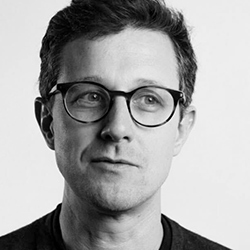 Pedro Russo (NL) is University Professor in Astronomy & Society at Leiden University, the Netherlands. Dr. Russo was the global coordinator for the International Year of Astronomy 2009. He obtained his University degree in applied mathematics, physics and astronomy from the University of Porto, Portugal, was a research fellow at the Max Planck Institute for Solar System Research in Germany and is involved with several international organisations, like the European Astronomical Society, Europlanet, the International Astronautical Federation. His work has received several awards, such as Seeds Special Award 2009, Scientix Best Educational Resource in 2015 and 2016, Most Innovative Educational Activities in 2017 and 2018 by HundrED and 2018 Leiden University’s K.J. Cath Prize. Pedro has worked in several science and art collaborations and is currently working on a collaboration with the Nederlands Dans Theater, NDT2.
Pedro Russo (NL) is University Professor in Astronomy & Society at Leiden University, the Netherlands. Dr. Russo was the global coordinator for the International Year of Astronomy 2009. He obtained his University degree in applied mathematics, physics and astronomy from the University of Porto, Portugal, was a research fellow at the Max Planck Institute for Solar System Research in Germany and is involved with several international organisations, like the European Astronomical Society, Europlanet, the International Astronautical Federation. His work has received several awards, such as Seeds Special Award 2009, Scientix Best Educational Resource in 2015 and 2016, Most Innovative Educational Activities in 2017 and 2018 by HundrED and 2018 Leiden University’s K.J. Cath Prize. Pedro has worked in several science and art collaborations and is currently working on a collaboration with the Nederlands Dans Theater, NDT2. Martin Honzik (AT) is an artist and director of Ars Electronica’s Festival, Prix and Exhibitions divisions. He studied visual experimental design at Linz Art University (graduated in 2001) and completed the master’s program in culture & media management at the University of Linz and ICCM Salzburg (graduated in 2003). Besides being independent Artist in several art projects, he joined the staff of the Ars Electronica Future Lab, where, until 2005, his responsibilities included exhibition design, art in architecture, interface design, event design and project management. Since 2006, Martin Honzik has been director of the Ars Electronica Festival and the Prix Ars Electronica and in charge of the exhibitions in the Ars Electronica Center as well as Ars Electronica’s international exhibition projects.
Martin Honzik (AT) is an artist and director of Ars Electronica’s Festival, Prix and Exhibitions divisions. He studied visual experimental design at Linz Art University (graduated in 2001) and completed the master’s program in culture & media management at the University of Linz and ICCM Salzburg (graduated in 2003). Besides being independent Artist in several art projects, he joined the staff of the Ars Electronica Future Lab, where, until 2005, his responsibilities included exhibition design, art in architecture, interface design, event design and project management. Since 2006, Martin Honzik has been director of the Ars Electronica Festival and the Prix Ars Electronica and in charge of the exhibitions in the Ars Electronica Center as well as Ars Electronica’s international exhibition projects. Horst Hörtner (AT) is a media artist and researcher. He is an expert in the design of human-computer interaction and holds several patents in this field. Hörtner was a founding member of the Ars Electronica Futurelab in 1996 and since then he has been the director of this atelier/laboratory. He started work in the field of media art in the 1980s and co-founded the media-art group x-space’ in Graz, Austria, in 1990. Horst Hörtner works at the nexus of art and science and gives lectures and talks at numerous international conferences and universities.
Horst Hörtner (AT) is a media artist and researcher. He is an expert in the design of human-computer interaction and holds several patents in this field. Hörtner was a founding member of the Ars Electronica Futurelab in 1996 and since then he has been the director of this atelier/laboratory. He started work in the field of media art in the 1980s and co-founded the media-art group x-space’ in Graz, Austria, in 1990. Horst Hörtner works at the nexus of art and science and gives lectures and talks at numerous international conferences and universities.JURY 2/2019
 Suzy Glass (UK) is an independent Producer and Cultural Consultant based in Scotland. She has more than fifteen years of experience working across the art, design and media sectors. She is interested in emerging and unusual contexts, focussing on sited and digital work. She enjoys working across genres, disciplines and sectors. Major projects include: Message from the Skies for Edinburgh’s Hogmanay (Underbelly, 2019) Ciara Phillip’s Every Woman (2016), co-commissioned by Edinburgh Art Festival and 14-18 NOW; Hanna Tuulikki’s Away with the Birds (2014), part of the Glasgow 2014 Cultural Programme; Yann Seznec’s Currents (2014), commissioned by the Edinburgh Art Festival as part of the PRSF New Music Biennial – winner of the Sonic Art category in the 2015 British Composer Awards.
Suzy Glass (UK) is an independent Producer and Cultural Consultant based in Scotland. She has more than fifteen years of experience working across the art, design and media sectors. She is interested in emerging and unusual contexts, focussing on sited and digital work. She enjoys working across genres, disciplines and sectors. Major projects include: Message from the Skies for Edinburgh’s Hogmanay (Underbelly, 2019) Ciara Phillip’s Every Woman (2016), co-commissioned by Edinburgh Art Festival and 14-18 NOW; Hanna Tuulikki’s Away with the Birds (2014), part of the Glasgow 2014 Cultural Programme; Yann Seznec’s Currents (2014), commissioned by the Edinburgh Art Festival as part of the PRSF New Music Biennial – winner of the Sonic Art category in the 2015 British Composer Awards.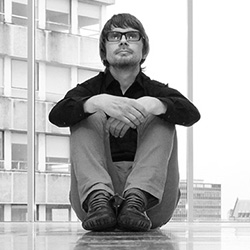 Drew Hemment (UK) Dr Drew Hemment is an artist, designer and academic researcher. He is Chancellor’s Fellow at Edinburgh Futures Institute and Edinburgh College of Art at University of Edinburgh. He leads GROW Observatory, Experiential AI and the Centre for Near Futures. Founder of FutureEverything and on Editorial Board of Leonardo. His work is recognised by Soil Award 2019 (Winner), STARTS Prize 2018 (Honorary Mention), Kantar Information Is Beautiful 2016 (Silver), Lever Prize 2010 (Winner), Prix Ars Electronica 2008 (Honorary Mention).
Drew Hemment (UK) Dr Drew Hemment is an artist, designer and academic researcher. He is Chancellor’s Fellow at Edinburgh Futures Institute and Edinburgh College of Art at University of Edinburgh. He leads GROW Observatory, Experiential AI and the Centre for Near Futures. Founder of FutureEverything and on Editorial Board of Leonardo. His work is recognised by Soil Award 2019 (Winner), STARTS Prize 2018 (Honorary Mention), Kantar Information Is Beautiful 2016 (Silver), Lever Prize 2010 (Winner), Prix Ars Electronica 2008 (Honorary Mention).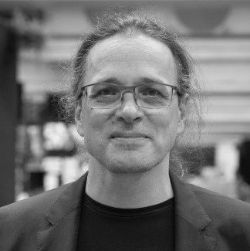 Gerfried Stocker (AT) is a media artist and telecommunications engineer. In 1991, he founded x-space, a team formed to carry out interdisciplinary projects, which went on to produce numerous installations and performances featuring elements of interaction, robotics and telecommunications. Since 1995, Gerfried Stocker has been artistic director of Ars Electronica. In 1995-96, he headed the crew of artists and technicians that developed the Ars Electronica Center’s pioneering new exhibition strategies and set up the facility’s in-house R&D department, the Ars Electronica Futurelab. He has been chiefly responsible for conceiving and implementing the series of international exhibitions that Ars Electronica has staged since 2004, and, beginning in 2005, for the planning and thematic repositioning of the new, expanded Ars Electronica Center.
Gerfried Stocker (AT) is a media artist and telecommunications engineer. In 1991, he founded x-space, a team formed to carry out interdisciplinary projects, which went on to produce numerous installations and performances featuring elements of interaction, robotics and telecommunications. Since 1995, Gerfried Stocker has been artistic director of Ars Electronica. In 1995-96, he headed the crew of artists and technicians that developed the Ars Electronica Center’s pioneering new exhibition strategies and set up the facility’s in-house R&D department, the Ars Electronica Futurelab. He has been chiefly responsible for conceiving and implementing the series of international exhibitions that Ars Electronica has staged since 2004, and, beginning in 2005, for the planning and thematic repositioning of the new, expanded Ars Electronica Center. Martin Honzik (AT) is an artist and director of Ars Electronica’s Festival, Prix and Exhibitions divisions. He studied visual experimental design at Linz Art University (graduated in 2001) and completed the master’s program in culture & media management at the University of Linz and ICCM Salzburg (graduated in 2003). Besides being independent Artist in several art projects, he joined the staff of the Ars Electronica Future Lab, where, until 2005, his responsibilities included exhibition design, art in architecture, interface design, event design and project management. Since 2006, Martin Honzik has been director of the Ars Electronica Festival and the Prix Ars Electronica and in charge of the exhibitions in the Ars Electronica Center as well as Ars Electronica’s international exhibition projects.
Martin Honzik (AT) is an artist and director of Ars Electronica’s Festival, Prix and Exhibitions divisions. He studied visual experimental design at Linz Art University (graduated in 2001) and completed the master’s program in culture & media management at the University of Linz and ICCM Salzburg (graduated in 2003). Besides being independent Artist in several art projects, he joined the staff of the Ars Electronica Future Lab, where, until 2005, his responsibilities included exhibition design, art in architecture, interface design, event design and project management. Since 2006, Martin Honzik has been director of the Ars Electronica Festival and the Prix Ars Electronica and in charge of the exhibitions in the Ars Electronica Center as well as Ars Electronica’s international exhibition projects.JURY STATEMENTS:
Martin Honzik, director of the Ars Electronica Festival:
The aim of a jury is basically to find those projects or protagonists from a certain number of possibilities that best fit the given framework conditions. This task is responsibility enough in itself. However, the concrete case represents a special situation due to the special orientation and constellation of the partners, their individual framework conditions and the complexity of the respective content orientation. Of course, the chosen general topic AI, whose extraordinarily high social relevance underscores the importance of the basic project and the urgency of discussing it. The deliberately chosen diversity of the partners, including the genres they represent, together with the complexity of the topic and the task of finding protagonists from the art world who should be able to succeed in both worlds and to connect both worlds in their prototypical individuality, but at the same time to challenge and develop them in a constructive, critical way.
How and why is the theme Entanglements – fair, moral and transparent AI significant to you as an artist?
What are the artistic and creative possibilities of AI you would like to explore, and how?
How would you approach collaboration and engagement with the AI scientists and/or ethicists?
These were the concrete questions which, apart from the highly specific profiles of the partners involved, were to provide the framework and guidelines for the submissions from all over the world. The large number and diversity of artistic reflection and positions proved how many different perspectives the topic was able to generate in the artistic community, but also how wide the qualitative spread was between the submitted works. The special framework conditions in which the submitted works were to be presented, with their specific questions, made the jury process a thoroughly complex task. With the artists and researchers Caroline Sinders and Anna Ridler, who were finally selected for the AI Lab, 2 personalities were chosen whose approach and project proposition could be assessed as having the highest potential for the orientation of the project programme. Especially the resulting pairing of the two collaborating personalities was judged by the jury with very high expectations. This is also confirmed by the quality of the projects realized, considering their respective artistic careers, the continuity and interrelationships of the research topics, as well as the quality of the projects. In summary, the jury is convinced that it has found the right protagonists for the given conditions. It was also important to us as a jury to make other or subsequent projects available to the submitters and jury members in order to make the claim and quality more definable.
Drew Hemment, who leads the Experiential AI programme at Edinburgh Futures Institutes within University of Edinburgh:
Sinders and Ridler were appointed Experiential AI Artists in Residence at Edinburgh Futures Institute as a part of AI Lab, the Residency Program European ARTificial Intelligence Lab. In selecting the artists, our priority was to identify artists who would simultaneously benefit from and contribute to the Experiential AI programme at Edinburgh Futures Institute. There were a large number of outstanding submissions to the residency, from many countries. Sinders and Ridler stood out because of the clarity of their vision and its fit to the residency theme. The curators and AI researchers at Edinburgh Futures Institute and Edinburgh partners in the residency were certain theirs was the best proposal and should be supported.
Sinders and Ridler address entanglements between humans and machines. They propose an artistic exploration of human aspects, inputs and decisions involved in each step of creating an AI. The artists bring their own research practice to the theme. They will contribute to debates on ethical AI through a critical art enquiry into topics such as labour and provenance in creating data models. For this residency, Edinburgh Futures Institute is interested in ways art can make AI transparent. The artists propose to investigate and reveal the hidden human labour involved throughout the process of creating an AI. They will investigate the detail and nuance of each step by engaging AI researchers in engineering and social sciences at Edinburgh.
We also asked artists to address the ethics and fairness of AI. Sinders and Ridler will address the labour rights of “ghost workers”, the invisible human hands on which autonomous systems depend. Both artists create databases as part of their artistic practice. Through artistic experiments they hope to make transparent the human influence in AI, so people can understand where they have agency. Through interviews with data workers and AI researchers the artists will explore how human messiness shapes eventual model output e.g. workers can be divorced from the things they are meant to be expertly labelling.
The research team in Edinburgh wants the artists to have freedom in where their artistic enquiry takes them. The research team will collaborate with the artists in their investigation, and evaluate the interactions between the artists, engineers and ethicists along the way. Sinders and Ridler will experiment with ways of giving audiences direct experience of AI systems. The hypothesis for the Edinburgh researchers is that this can inspire new concepts and paradigms on ethical and responsible AI. This residency is breaking ground in a number of ways. It is the first time Sinders and Ridler have collaborated, and it is the first residency of the Experiential AI group at Edinburgh Futures Institute.
JURY 1/2019

 Aisling Murray (IE) Graduate, NUI Galway and Trinity College Dublin. Curator and Creative Producer with 8 years’ experience covering exhibitions, festivals, literature, spoken word, theatre and dance. Board member of A4 Sounds, Dublin. Manages exhibitions from concept to full realisation in Ireland and internationally for Science Gallery Dublin including commissioning and forging partnerships with peer organisations such as The National Concert Hall and Dublin Dance Festival.
Aisling Murray (IE) Graduate, NUI Galway and Trinity College Dublin. Curator and Creative Producer with 8 years’ experience covering exhibitions, festivals, literature, spoken word, theatre and dance. Board member of A4 Sounds, Dublin. Manages exhibitions from concept to full realisation in Ireland and internationally for Science Gallery Dublin including commissioning and forging partnerships with peer organisations such as The National Concert Hall and Dublin Dance Festival.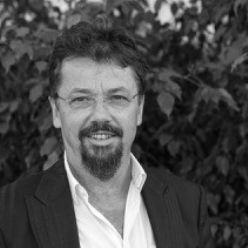 Antoine Conjard (FR) Antoine Conjard holds the position of Artistic Director of Hexagone Scène Nationale Arts Sciences, Meylan (France) since 2001, a theatre of 600 seats dedicated to performing arts. He is the instigator of Atelier Arts Sciences — joint research platform shared by Hexagone and CEA research centre (since 2007, Grenoble, France) as well as of EXPERIMENTA, the Fair.
Antoine Conjard (FR) Antoine Conjard holds the position of Artistic Director of Hexagone Scène Nationale Arts Sciences, Meylan (France) since 2001, a theatre of 600 seats dedicated to performing arts. He is the instigator of Atelier Arts Sciences — joint research platform shared by Hexagone and CEA research centre (since 2007, Grenoble, France) as well as of EXPERIMENTA, the Fair. Christophe de Jaeger (BE) Art historian and curator specializing in media art and collaborative practices between art and research. I have realized projects in Belgium, the USA, Shanghai (China), and Milano (Italy). Program Manager of the department BOZAR Art & Research (Center for Fine Arts Brussels) and founder at GLUON, a platform for art, science & technology (Brussels). Christophe De Jaeger has a strong interest in S.T.E.A.M. education.
Christophe de Jaeger (BE) Art historian and curator specializing in media art and collaborative practices between art and research. I have realized projects in Belgium, the USA, Shanghai (China), and Milano (Italy). Program Manager of the department BOZAR Art & Research (Center for Fine Arts Brussels) and founder at GLUON, a platform for art, science & technology (Brussels). Christophe De Jaeger has a strong interest in S.T.E.A.M. education. Gerfried Stocker (AT) is a media artist and telecommunications engineer. In 1991, he founded x-space, a team formed to carry out interdisciplinary projects, which went on to produce numerous installations and performances featuring elements of interaction, robotics and telecommunications. Since 1995, Gerfried Stocker has been artistic director of Ars Electronica. In 1995-96, he headed the crew of artists and technicians that developed the Ars Electronica Center’s pioneering new exhibition strategies and set up the facility’s in-house R&D department, the Ars Electronica Futurelab. He has been chiefly responsible for conceiving and implementing the series of international exhibitions that Ars Electronica has staged since 2004, and, beginning in 2005, for the planning and thematic repositioning of the new, expanded Ars Electronica Center.
Gerfried Stocker (AT) is a media artist and telecommunications engineer. In 1991, he founded x-space, a team formed to carry out interdisciplinary projects, which went on to produce numerous installations and performances featuring elements of interaction, robotics and telecommunications. Since 1995, Gerfried Stocker has been artistic director of Ars Electronica. In 1995-96, he headed the crew of artists and technicians that developed the Ars Electronica Center’s pioneering new exhibition strategies and set up the facility’s in-house R&D department, the Ars Electronica Futurelab. He has been chiefly responsible for conceiving and implementing the series of international exhibitions that Ars Electronica has staged since 2004, and, beginning in 2005, for the planning and thematic repositioning of the new, expanded Ars Electronica Center.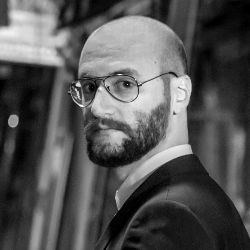 Heracles Papatheodorou (GR) coordinates and co-curates public programmes on digital arts and innovation at Onassis Stegi, in Athens. As the Digital Policy & Development Coordinator, he is also responsible for managing digital transformation projects. He is a licensed architect (dipl. School of Architecture, National Technical University of Athens), and has worked for several years both as a freelancer and within startups in the fields of design, architecture and web development.
Heracles Papatheodorou (GR) coordinates and co-curates public programmes on digital arts and innovation at Onassis Stegi, in Athens. As the Digital Policy & Development Coordinator, he is also responsible for managing digital transformation projects. He is a licensed architect (dipl. School of Architecture, National Technical University of Athens), and has worked for several years both as a freelancer and within startups in the fields of design, architecture and web development. Horst Hörtner (AT) is a media artist and researcher. He is an expert in the design of human-computer interaction and holds several patents in this field. Hörtner was a founding member of the Ars Electronica Futurelab in 1996 and since then he has been the director of this atelier/laboratory. He started work in the field of media art in the 1980s and co-founded the media-art group x-space’ in Graz, Austria, in 1990. Horst Hörtner works at the nexus of art and science and gives lectures and talks at numerous international conferences and universities.
Horst Hörtner (AT) is a media artist and researcher. He is an expert in the design of human-computer interaction and holds several patents in this field. Hörtner was a founding member of the Ars Electronica Futurelab in 1996 and since then he has been the director of this atelier/laboratory. He started work in the field of media art in the 1980s and co-founded the media-art group x-space’ in Graz, Austria, in 1990. Horst Hörtner works at the nexus of art and science and gives lectures and talks at numerous international conferences and universities. Karin Ohlenschläger (ES) Artistic director of LABoral Centro de Arte y Creación Industrial in Gijon, Spain, as well as a historian, scholar and curator who has focused on media art, science and contemporary art since 1985. She has chaired the Banquet Foundation of Art, Science, Technology and Society (1998-2006) and the Institut of Contemporary Arts in Madrid (2011-2012), and co-founded and co-directed MediaLab Madrid (2002/2006). She also has headed other international initiatives, including the Cibervisión International Festival of Art, Science and Technology at Centro Cultural Conde Duque, CCCD (2002) and at Rey Juan Carlos University in Madrid (1999).
Karin Ohlenschläger (ES) Artistic director of LABoral Centro de Arte y Creación Industrial in Gijon, Spain, as well as a historian, scholar and curator who has focused on media art, science and contemporary art since 1985. She has chaired the Banquet Foundation of Art, Science, Technology and Society (1998-2006) and the Institut of Contemporary Arts in Madrid (2011-2012), and co-founded and co-directed MediaLab Madrid (2002/2006). She also has headed other international initiatives, including the Cibervisión International Festival of Art, Science and Technology at Centro Cultural Conde Duque, CCCD (2002) and at Rey Juan Carlos University in Madrid (1999).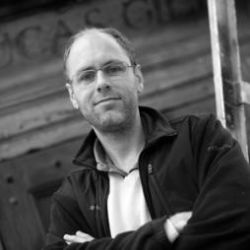 Lucas Evers (NL) joined Waag in April 2007 and is currently leading Waag’s Wetlab. He is actively involved in several projects that concern the interactions between the arts and sciences, arts and ethics and the arts in a contemporary makers culture. The Wetlab is a laboratory where arts, design, sciences, engineering and the public meet to research biotechnologies and their impact on society and ecology. Lucas Evers is trained in fine arts and teaching at Maastricht Academy of Fine Arts and Design and he studied politics at the University of Amsterdam. He worked De Balie Center for Culture and Politics and Melkweg in Amsterdam, programming cinema, new media and politics.
Lucas Evers (NL) joined Waag in April 2007 and is currently leading Waag’s Wetlab. He is actively involved in several projects that concern the interactions between the arts and sciences, arts and ethics and the arts in a contemporary makers culture. The Wetlab is a laboratory where arts, design, sciences, engineering and the public meet to research biotechnologies and their impact on society and ecology. Lucas Evers is trained in fine arts and teaching at Maastricht Academy of Fine Arts and Design and he studied politics at the University of Amsterdam. He worked De Balie Center for Culture and Politics and Melkweg in Amsterdam, programming cinema, new media and politics. Mariam Natroshvili (GE) is a Tbilisi based artist, conceptual writer and exhibition maker. The main focus of her work is finding right words for right places and collecting forgotten stories. Exhibitions and interventions organised by Mariam Natroshvili include: Illegal Kosmonavtika, Dictionary of foreign words, Who will still the roaring of the sea?, etc. She is a curator of visual department at SOU festival since 2017 and founder of Museum of Contemporary Art Tbilisi – museum on call.
Mariam Natroshvili (GE) is a Tbilisi based artist, conceptual writer and exhibition maker. The main focus of her work is finding right words for right places and collecting forgotten stories. Exhibitions and interventions organised by Mariam Natroshvili include: Illegal Kosmonavtika, Dictionary of foreign words, Who will still the roaring of the sea?, etc. She is a curator of visual department at SOU festival since 2017 and founder of Museum of Contemporary Art Tbilisi – museum on call. Mariano Salvador (ES) is a journalist, audiovisual and new media researcher and filmmaker. He received a Bachelor of Arts in Journalism from the University of Navarra (Pamplona, Spain) and completed his studies at the School of Cinema and Audiovisual media of Madrid. Since mid-2016 he is Manager Director of the Zaragoza City of knowledge Foundation, a nonprofit private institution which aims for spreading knowledge society innovations among citizens in order to achieve a more open, inclusive, democratic and cooperative world.
Mariano Salvador (ES) is a journalist, audiovisual and new media researcher and filmmaker. He received a Bachelor of Arts in Journalism from the University of Navarra (Pamplona, Spain) and completed his studies at the School of Cinema and Audiovisual media of Madrid. Since mid-2016 he is Manager Director of the Zaragoza City of knowledge Foundation, a nonprofit private institution which aims for spreading knowledge society innovations among citizens in order to achieve a more open, inclusive, democratic and cooperative world.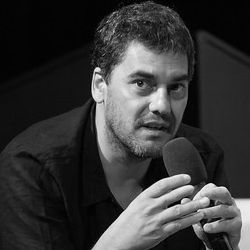 Mariano Sardón (AR) studied physics at the University of Buenos Aires and is currently Professor and Head of the Electronic Art Program at the Universidad Nacional de Tres de Febrero. Buenos Aires, Argentina. He received the Konex Prize in the Fine Arts Category 2012 of the Konex Foundation, Buenos Aires, the Experimentation Prize in Non-traditional supports and video 2008 of the Argentine Association of Art Critics.
Mariano Sardón (AR) studied physics at the University of Buenos Aires and is currently Professor and Head of the Electronic Art Program at the Universidad Nacional de Tres de Febrero. Buenos Aires, Argentina. He received the Konex Prize in the Fine Arts Category 2012 of the Konex Foundation, Buenos Aires, the Experimentation Prize in Non-traditional supports and video 2008 of the Argentine Association of Art Critics. Mariano Sigman (AR) was born in Argentina and grew up in Barcelona, Spain. He studied physics at the University of Buenos Aires; did his PhD in neuroscience in New York, and a postdoc at College de France, Paris. He is the director of the Neuroscience Laboratory at Di Tella University (Buenos Aires), an interdisciplinary group integrated by physicists, psychologists, biologists, engineers, educational scientists, linguists, mathematicians, artists and computer scientists.
Mariano Sigman (AR) was born in Argentina and grew up in Barcelona, Spain. He studied physics at the University of Buenos Aires; did his PhD in neuroscience in New York, and a postdoc at College de France, Paris. He is the director of the Neuroscience Laboratory at Di Tella University (Buenos Aires), an interdisciplinary group integrated by physicists, psychologists, biologists, engineers, educational scientists, linguists, mathematicians, artists and computer scientists. Martin Honzik (AT) is an artist and director of Ars Electronica’s Festival, Prix and Exhibitions divisions. He studied visual experimental design at Linz Art University (graduated in 2001) and completed the master’s program in culture & media management at the University of Linz and ICCM Salzburg (graduated in 2003). Besides being independent Artist in several art projects, he joined the staff of the Ars Electronica Future Lab, where, until 2005, his responsibilities included exhibition design, art in architecture, interface design, event design and project management. Since 2006, Martin Honzik has been director of the Ars Electronica Festival and the Prix Ars Electronica and in charge of the exhibitions in the Ars Electronica Center as well as Ars Electronica’s international exhibition projects.
Martin Honzik (AT) is an artist and director of Ars Electronica’s Festival, Prix and Exhibitions divisions. He studied visual experimental design at Linz Art University (graduated in 2001) and completed the master’s program in culture & media management at the University of Linz and ICCM Salzburg (graduated in 2003). Besides being independent Artist in several art projects, he joined the staff of the Ars Electronica Future Lab, where, until 2005, his responsibilities included exhibition design, art in architecture, interface design, event design and project management. Since 2006, Martin Honzik has been director of the Ars Electronica Festival and the Prix Ars Electronica and in charge of the exhibitions in the Ars Electronica Center as well as Ars Electronica’s international exhibition projects. Mikael Fock (DK) CEO and Artistic Director at The Culture Yard, Denmark, which provides over 1.000 annual cultural events, three festivals including the international art, science and technology festival CLICK. Since 2012, The Culture Yard has produced and presented numerous international productions in the format 4D Box that has a unique interactive stage in real 3D. Mikael Fock has a background as director of performing arts in theater, film and mix media and has been working constantly with new media technologies and hybrid arts for many years. He has been a member of the National Danish Art Counsel from January 2014 — 2018.
Mikael Fock (DK) CEO and Artistic Director at The Culture Yard, Denmark, which provides over 1.000 annual cultural events, three festivals including the international art, science and technology festival CLICK. Since 2012, The Culture Yard has produced and presented numerous international productions in the format 4D Box that has a unique interactive stage in real 3D. Mikael Fock has a background as director of performing arts in theater, film and mix media and has been working constantly with new media technologies and hybrid arts for many years. He has been a member of the National Danish Art Counsel from January 2014 — 2018.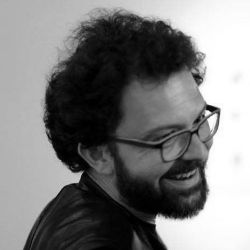 Nicolas Rosette (FR) is head of theatre at Le lieu unique (Nantes, France) and artistic collaborator at the Théâtre Nouvelle Génération (National Drama Center of Lyon, France). He is also the artistic director of the SIANA Festival (Evry, France), OMNSH member (Research Collective. Digital worlds, digital humanities, games studies & more) and media art curator.
Nicolas Rosette (FR) is head of theatre at Le lieu unique (Nantes, France) and artistic collaborator at the Théâtre Nouvelle Génération (National Drama Center of Lyon, France). He is also the artistic director of the SIANA Festival (Evry, France), OMNSH member (Research Collective. Digital worlds, digital humanities, games studies & more) and media art curator.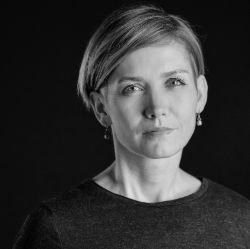 Sandra Sajovic (SI) has been working as a curator and producer in Kapelica Gallery, an art space for contemporary investigative art, based in Ljubljana since 1995. She has been involved in the program development of BioTehna, a platform for artistic research of living systems, adjacent to the gallery within the Kersnikova Institute. Her extensive experiences as a curator and producer led to some of the most prominent national and international artistic manifestations’ collaborations.
Sandra Sajovic (SI) has been working as a curator and producer in Kapelica Gallery, an art space for contemporary investigative art, based in Ljubljana since 1995. She has been involved in the program development of BioTehna, a platform for artistic research of living systems, adjacent to the gallery within the Kersnikova Institute. Her extensive experiences as a curator and producer led to some of the most prominent national and international artistic manifestations’ collaborations.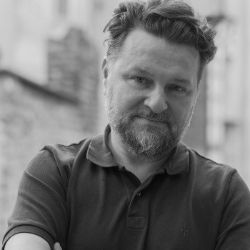 Slobodan Coba Jovanovic (SB) holds a Masters degree in Arts from the Universita Internazionale dell Arte, Firenze, Italia, Accedemia Delle Belle Arti — Firenze, Italia. Since 2013 he is the Head of Design at the Center for the Promotion of Science. He is the Creative Director of Coba&Associates branding. He has worked on the corporate identity for big companies such as Imlek, Turistical Organization of Serbia, Doncafe, EuroAxix bank, Vineyard Tikves, Philip Morris International, etc. He has worked in the Packaging and Advertising design for Calsberg, Adore, Valleta, Smirnoff vodka, Baileys, Actavis, etc.
Slobodan Coba Jovanovic (SB) holds a Masters degree in Arts from the Universita Internazionale dell Arte, Firenze, Italia, Accedemia Delle Belle Arti — Firenze, Italia. Since 2013 he is the Head of Design at the Center for the Promotion of Science. He is the Creative Director of Coba&Associates branding. He has worked on the corporate identity for big companies such as Imlek, Turistical Organization of Serbia, Doncafe, EuroAxix bank, Vineyard Tikves, Philip Morris International, etc. He has worked in the Packaging and Advertising design for Calsberg, Adore, Valleta, Smirnoff vodka, Baileys, Actavis, etc.